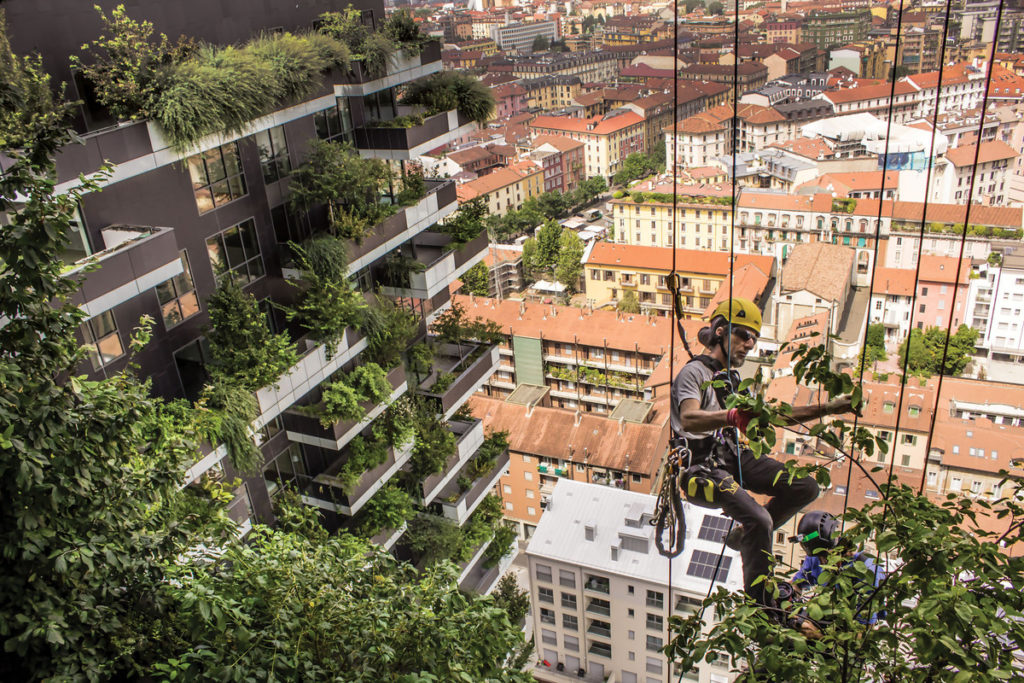
In many ways, the forests of Stefano Boeri’s Bosco Verticale towers in Milan (2009–2014) are both lovely and functional. Boeri and a coterie of consultants took an idea that might seem fanciful and cliché and, through diligent and years-long attention to the minutiae of the structure and the specifics of airborne trees, produced a working prototype. The seed has been planted, and Boeri has been propagating it in cities throughout Europe and Asia. The towers undergird proposals of a more sweeping scale, such as his design proposal for a Forest City in Shijiazhuang, China (2015). Boeri’s vertical forests stand among a distinct, albeit not altogether new, building type of the early 21st century: the eco-fantasy project. Historical projects range from work by Ken Yeang to Emilio Ambasz, but one could also reference Rogers Stirk Harbour + Partners’ (RSHP) proposal for a 200-meter-high tower on Park Avenue (2012–2015), which included a series of “sky gardens” that were imagined to “reconnect workers and the city with nature,” and Sasaki Associates’ Forest City Master Plan (2015), which envisions a $100 billion development on an aquatic reserve off the coast of Malaysia and “seeks to establish a symbiotic relationship between development and the natural environment.” Large-scale, ambitious projects such as these have not just attempted to mitigate a building’s impact on natural systems, but have sought, at least rhetorically, to become a part of those systems.
The rhetoric surrounding these purpose-grown forests is that of performance and optimization. For example, RSHP’s sky gardens proposed to employ “different American landscape ecologies, from forest to alpine, to suit the different altitudes of each garden,” and the trees of Boeri’s vertical forests are selected at each level and exposure for the seasonally specific solar shading they can provide. These trees protect interiors from wind, small dust particles, and acoustic pollution, while releasing humidity and oxygen and absorbing carbon dioxide. In a description in this magazine, in 2009, Boeri refers to the forested facade as a “comfort-creating ‘mechanical’ device,” referencing critic Reyner Banham’s assertion in The Architecture of the Well-Tempered Environment (1969) that humans need the comfort and environmental control that can be provided by mechanical systems, with their capacity to create, as Boeri quotes Banham, “dryness in rainstorms, heat in winter, chill in summer.”
comments